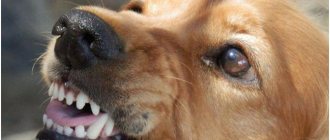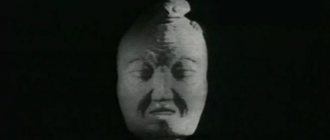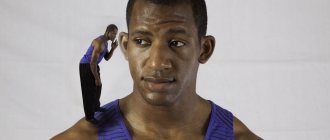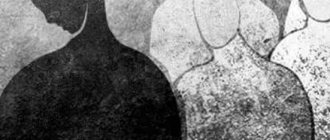Trypanophobia - what is it?
Trypanophobia is the fear of injections, needles, syringes, fear of vaccinations. This procedure is unpleasant for every person, but some people experience irrational fear at the sight of an injection and cannot pull themselves together when they need to donate blood from a finger or give an injection or put on an IV.
What frightens a trypanophobe:
- pain when skin is pierced;
- type of blood;
- the thought of infection through a needle;
- bumps and bruises at the injection site;
- air entering a muscle or vein during injections;
- the thought that the tip of the needle will break off;
- the thought that the needle will reach the bone.
This is interesting! According to WHO, trypanophobia affects 20% of the Russian population.
Manifestations and signs of the disorder
Russian specialists in the field of psychiatry managed to conduct a survey among 50 people and find out exactly what associations they have when they need to get an injection.
Main manifestations and signs of phobia:
- The patient is afraid of the consequences of the injection, or rather the painful sensations . Such a person will try to avoid piercing any parts of the body: muscles, grafting into the shoulder blades or buttocks. He may also be especially frightened by the fact that the doctor has a “heavy hand”, and the needle may turn out to be dull, and this will only intensify the pain. Previously, reusable glass syringes were used, and the needles became dull due to sterilization. This made the penetration of the needle under the skin painful. Currently, not all hospitals use high-quality needles from reputable manufacturers.
- The fear that air will enter through the syringe and the person will die is also often present in trypanophobes. Unqualified health workers really do not know how to completely knock out air bubbles from a syringe. However, those who are afraid should know that exposure to oxygen is indeed dangerous. But provided that a large amount of air mass has entered the vein. A small air bubble will not cause harm to health, but will simply dissolve in the lymph. This means that injections into the gluteal muscles or arms are not dangerous.
- The child may simply be afraid of doctors , who, if they disobey, may begin to shout at him or use force. Fear can persist until adolescence. In adulthood, a person will avoid any contact with the hospital, injections at the dentist and other specialists.
- The fear of a bruise or hematoma is due to the fact that a person is afraid of infection from the needle and an abscess. If the needle is not inserted deep enough, the skin is not disinfected and a non-sterile syringe is used, a bruise or wound may appear. This can be avoided by strictly following the rules.
- Some trypanophobes fear that the needle may reach bone tissue or get stuck under the skin . This fear can be refuted by the fact that injections are given in certain parts of the body, where contact of the needle with bone tissue is maximally excluded. Only low-quality steel can break, so you should only contact professional doctors if you have such a fear.
We recommend that you read: What is the name of the fear of women and girls?
Many people do not understand how to stop being afraid of needles due to accompanying phobias. These could be fears:
- viral infections (germaphobia);
- infection or illness from a medication (mysophobia);
- syphilis (syphilophobia);
- HIV infection (speedophobia);
- side effects.
Manifestations of trypanophobia
How does needle phobia manifest (psychological symptoms):
- sleep problems (shallow and light sleep, nightmares, frequent awakenings, trouble falling asleep, insomnia);
- absent-mindedness;
- constant pressure;
- obsessive thoughts about the upcoming procedure, the need for treatment, possible complications (bleeding, air entry, etc.);
- inability to think about anything other than injections;
- mood swings;
- inappropriate reactions (tearfulness, tears);
- irritability.
How does fear of injections manifest itself somatically:
- chills (throws you either hot or cold);
- increased heart rate;
- tremor;
- nausea;
- gagging;
- increased blood pressure;
- chest pain;
- weakness;
- feeling of suffocation;
- dizziness;
- darkening of the eyes;
- loss of orientation in space;
- faintness and loss of consciousness.
Somatic symptoms occur with direct contact with a frightening object, but the more advanced the disease, the more often physical manifestations occur.
At advanced stages, panic attacks and hysterics occur. Children in this state run away from adults, run around the floors of the hospital, cry, scream, bite, and fight. Adults rarely show such reactions, but with very severe phobias this can happen. More often than not, adults put off visiting a doctor until the last minute; in front of the office they can turn around and go home (no one will catch them and hold them back).
Symptoms
When a person gets scared, a large amount of adrenaline is produced in his body. Accordingly, the pupils dilate, the skin turns pale, due to the fact that the blood “leaves” into the muscles.
After all, the natural reaction in a moment of danger is to run away. Breathing becomes frequent and shallow, and tremors may begin from excess tension. That is, your hands, chin and lower lip shake, your legs give way.
To make running easier, the body gets rid of excess weight. Therefore, you immediately want to go to the toilet, diarrhea occurs and even in some cases vomiting. The temperature drops, chills and profuse sweating appear, despite the cold in the room.
The perception of the surrounding reality at such a moment is limited, therefore trypanophobia is not capable of thinking rationally and submitting ideas, words to criticism and logic.
What can I say, a person during a panic attack sometimes does not notice obvious obstacles. Because of which he gets injured, accidentally injures others, and so on.
For example, he jumps out into the street and gets hit by a car, falls through a hatch, or falls down the stairs.
All of the above symptoms occur at the mere mention of using a syringe. Depending on personal characteristics, the intensity of panic attacks will vary.
Let's say that one person with this disorder begins to have heart pain and he gets even more scared, because he decides that he is going to die right now. While another, less emotional person, will simply have sweaty palms and have breathing problems.
Usually after an attack, when the injection is avoided, or when it has already been done, total fatigue appears.
Still, most of the body’s resources were aimed at trying to survive, to cope with the source of anxiety. Why is exhaustion a completely normal state?
Shame and guilt for behavior and reactions to the syringe also often make themselves felt. Which also negatively affects the general condition and health.
Because getting rid of these feelings is quite difficult, just like stopping being afraid of injections. In general, in both cases a consultation is necessary, and sometimes in-depth work with a psychotherapist.
Causes of fear of needles and pricks
Fear of needles and pricks occurs for the following reasons:
- Childhood psychotrauma. Perhaps the child suffered a painful treatment experience or his parents intimidated him with horror stories about evil uncles who would give a painful injection for bad behavior.
- Psychotrauma in adulthood. Some people experience poor-quality medical care (bumps, bruises, pain) or are forced to endure painful injections and IVs (some medications sting very much). Older people may have fresh memories of the old level of medicine, when painkillers were not used when giving painful injections. Or a person remembers the unpleasant sensations when injected with a low-quality, reusable syringe that does not pierce, but tears the skin. Long-term treatment or deterioration in well-being after taking the test, against the background of complications after an injection into a vein or after an IV, can also leave negative memories and cause unpleasant associations.
- Personality characteristics. Sensitive, impressionable, overly susceptible people are at risk. They easily believe the scary stories of friends, news from the media, amateur articles from the Internet, notes in the newspaper, posts on social networks. They believe rumors that for some, treatment ended in infection, and for others, donating blood for testing ended in blood poisoning, or how someone encountered other complications, unprofessionalism, rudeness, and tactlessness of the medical staff.
- Self-medication. It is not always possible to regularly go to the hospital for injections; in this case, they ask someone you know to give them. A person who has mastered a technique from a video on the Internet may make a mistake and do something wrong. Some people also prescribe medicine for themselves, in which case the risk of complications increases significantly. But in case of complications, a person does not blame himself and self-medication; he develops a negative attitude towards injections as such.
A separate risk group includes people who are under constant stress, individuals with neuroses, and in a state of exhaustion. In this state, any phobia can develop, including fear of injections, fear of needles and pricks, fear of syringes.
It is important! Behind the fear of needles may be a fear of pain, blood, damage, medical care, and medications. All these are separate types of phobias that have their own names of fears.
Prevention: advice from psychologists
It should be remembered that a person can cope with internal problems and fears, regardless of age. And such a disorder is treatable.
Panic fear can be prevented. Psychologists advise following the recommendations below.
- Do not observe the actions of health care workers. Turn away, look to the side. It is important to think about something good.
- Distract yourself while the injection is being administered into the skin and you will not feel the pain that occurs during the process. If you come with a loved one, you can talk about something. Look around the office, sing your favorite song in a whisper.
- Ask for the injection while lying down. Especially if an injection into a vein is planned. According to doctors, in this position a person experiences a minimum of pain. The risk of losing consciousness is also reduced.
- Transfer the pain to another part of the body. The easiest way is to pinch yourself. This will help shift the pain center to another organ.
But the main thing is a positive attitude. You need to believe that everything will go well. Don't worry about what hasn't happened yet. You can recite affirmations - positive statements. They operate based on the method of self-hypnosis.
A cunning scheme will help with children - a reward for courage. Agree with your child that he will receive a sweet or a toy for good behavior.
If the baby is very small, promise a reward simply for giving the health worker an injection.
The pinch will help shift the center of pain from the injection site
Types of trypanophobia
There are three types of trypanophobia: vasovagal, associative, resistive. The first type occurs in 50% of cases. With this type, the sight of the needle and its contact with the skin are frightening. Among the reasons, psychologists name a genetic factor (our ancestors pretended to be dead and fainted so that an arrow or spear would not hit them).
The associative form occurs in 30% of cases. It is caused by negative childhood experiences, and arises on the principle of indirect associations and incorrect cause-and-effect relationships. For example, a child saw how a seriously ill relative was given an injection, and a few days later the patient died. The child associated the death with the injection.
The resistive form occurs in 20% of cases. The reason is the fear of being helpless, immobilized, at the mercy of other people. This belief is formed due to negative childhood memories of how the child was held by doctors or parents, shouted at, scolded, intimidated, gagged, tied up, etc. Violence and betrayal from childhood turns into trypanophobia in adulthood.
Each of the three types has its own manifestations.
Manifestations of the vasovagal form:
- cardiopalmus;
- tinnitus;
- pallor;
- muscle weakness;
- sweating;
- nausea;
- dizziness;
- pressure surges.
Against the background of this type, another phobia often develops - the fear of losing consciousness, because of this, hitting your head and getting injured or becoming an object of ridicule.
Manifestations of the associative form:
- panic attacks;
- bouts of crying;
- insomnia;
- headache;
- chronic anxiety.
Manifestations of resistive form:
- cardiopalmus;
- increased blood pressure;
- shiver;
- aggressiveness;
- hostility.
In each of the three cases, a panic attack can begin on the threshold of the hospital, when a person sees a doctor, thinks about the procedure, sees blood, a wound, a syringe, a needle.
There is another classification that distinguishes fear of needles, fear of injections and syringes, and fear of injecting another person. Let's take a closer look at them.
Fear of needles
It's not so much the needle itself that is scary, but the fact that a person's skin will be pierced. A person with such a phobia begins to panic when he sees pictures or videos where blood is taken from a person or an IV is placed. If he has to donate blood, he runs out of the office in a panic and behaves aggressively and rudely.
Fear of injections and syringes
A person is afraid of injections and syringes, both with and without a needle. Both real procedures and frames in photos and videos are frightening.
Fear of injecting another person
Some people may entrust their buttock or vein to another person, but they themselves admit: “I’m afraid to inject myself or someone else.” The reasons are fear of responsibility, lack of self-confidence. To get rid of the fear of injections, you can ask health workers for a master class, you need to study the technology, practice on toys, and practice.
Treatment
- As with other phobias, trypanophobia can be overcome using systemic desensitization. This process involves gradual exposure to needles, so that with repetition and practice, the procedure of receiving an injection loses its “alarming” power. You can do this yourself, or seek help from a doctor.
- Behavioral and cognitive therapy are other methods that can help manage negative thoughts and reactions to needles and injections. Strategies implemented here include writing down fearful thoughts and changing them to positive ones, etc. The effectiveness of this treatment varies greatly depending on the individual and the severity of the condition. There is some controversy regarding the effectiveness of behavioral treatments for specific phobias (like blood, injections, injury). Although there is some evidence to support the effectiveness of exposure therapy approaches. Any treatment that promotes relaxation techniques may be contraindicated for the treatment of needle anxiety because this approach tends to lower blood pressure, which only increases the vasovagal reflex. In response to this, graded exposure approaches include a supporting component. It relies on applied tension as a way to prevent complications associated with the vasovagal response to blood, trauma, or injection-type stimuli.
- Another very beneficial treatment that takes effect in a very short time is individual clinical hypnotherapy. These sessions induce deep relaxation in the patient and help explore the roots of the phobia. Visualization techniques can then be used to address the fear in a positive manner.
- Self-help such as deep breathing, meditation and muscle relaxation are also recommended to overcome fear.
Trypanophobia is a phobia that affects many people. However, everyone must take control of their life and simple exercises and practices can be used to overcome it.
Patients are usually referred to therapy to calm their anxiety and stress levels. Doctors use a combination of psychological and physical measures, such as applying muscle tension, to help patients become aware that there is a needle in front of them.
A popular treatment for Trypanophobia is cognitive behavioral therapy (CBT), which allows the patient to become immune to the fear by being exposed. Patients are given pictures of needles or blood and are asked to draw and talk about it. They are subsequently given a real needle and the goal is that by this point the person should be comfortable enough without fear of needles and blood.
Some refuse professional help. Instead, another type of healing revolves solely around motivation, regardless of whether the patient is willing to deal with their phobia themselves. Similar to CBT, people treat themselves by performing various exercises. This does not require professional help and simply depends on the person himself.
Hypnosis has been considered for the treatment of patients with Trypanophobia. Hypnotherapists are known to use relaxation practices for people with general anxiety problems. The form of therapy includes the "Applied Tension" method, which was developed by Lars-Goran Est and his colleagues at Uppsala University in Sweden. This "coping method" involves creating tension on a person's arms, legs, and chest until they begin to feel a rise in body temperature (Robertson), which usually occurs within 10 to 20 seconds. These sessions of muscle tension are repeated 5 times at intervals of 20 to 30 seconds. Patients undergo this form of therapy for 5 weeks. It helps prevent fainting by applying tension to the body, the blood pressure rises steadily, preventing any sudden drop until their vaccination is completed. Using this therapy, there was a noticeable improvement in 90% of Trypanophobia sufferers. Compared to patients who used only relaxation techniques, where only 60% showed noticeable improvement.
Along with muscle tension, there are several physical maneuvers that help treat phobias. Therapists suggest that patients perform movements such as crossing their legs, tensing their muscles, and holding their breath while inserting the needle. Doctors instruct their patients to perform these maneuvers in sync with the injection. It is also recommended that the person remain seated with their head down while performing these movements.
The medical literature offers a number of treatments that have been found to be effective for specific cases of needle phobia, but provides very little guidance as to what therapy may be effective for any individual case. Below are some of the methods that are effective in certain circumstances.
- Ethyl chloride spray (and other freezing agents). Easy to administer but provides only superficial pain control.
- Jet nozzles. Jet Injectors work by forcing substances into the body through a high-pressure gas stream rather than a needle. Although they are not needles, some people report that they cause pain. Additionally, it is only useful in a very limited number of situations involving needles, i.e. insulin and some inoculations.
- Iontophoresis. Iontophoresis stimulates anesthesia through the skin using an electrical current. It provides effective pain relief, but is generally not available to consumers in the commercial market and some find it inconvenient to use.
- EMLA is a local anesthetic that is a eutectic mixture of lidocaine and prilocaine. This cream is available by prescription in the United States and is freely available in some other countries. Although it is not as effective as iontophoresis, since EMLA does not penetrate as deeply as iontophoresis anesthetics. EMLA provides easier application than iontophoresis. EMLA goes much deeper than regular topical anesthetics, and it works adequately for many people.
- Ametop gel appears to be more effective than EMLA for pain relief during venipuncture.
- Lidocaine, tetracaine. A self-heating patch containing a eutectic mixture is available in several countries. It is specifically approved by government agencies for use in needle procedures. Velcro is sold under the brand name Synera in the United States and Rapydan in the European Union. Each patch is packed in a sealed bag. It begins to warm slightly when removed from the packaging and exposed to air. It takes 20 to 30 minutes to achieve full pain relief. Label Synera was approved by the US Food and Drug Administration on June 23, 2005.
- Nitrous Oxide (Laughing Gas). This provides sedation and will reduce the patient's anxiety, along with some mild analgesic effects.
- Inhalation. General anesthesia. This will eliminate all pain and also erase the memory of any injection procedure. On the other hand, this is often seen as a very extreme solution. In most cases, this is not covered by insurance, and many doctors refuse it. It is risky and expensive and may require a hospital stay.
- Benzodiazepines, such as diazepam (Valium) or lorazepam, help relieve anxiety about needle phobias, says Dr. James Hamilton. These drugs have an onset of action within 5–15 minutes after ingestion. A relatively large oral dose may be required.
How to get rid of a phobia
It is recommended to begin treatment as early as possible, preferably in childhood, as soon as signs of pathology appear. Treatment methods for adults and children differ. In children's therapy, play methods are used; in adults, treatment is carried out using psychotherapy and medications. You can cope with a mild phobia on your own.
Independent work on fear
Some people can withstand injections in the buttocks, but in the dentist’s office they say: “I’m afraid of an injection in the gums,” others are afraid of any interventions. How not to be afraid of injections? The main method of self-regulation is distraction. Warn the doctor about your fear and try not to look at frightening objects or the doctor’s manipulations. Remember something pleasant, listen to music, imagine something pleasant, talk to a doctor or a “support group” if it is acceptable to be present at the procedure with someone. While sitting in line outside the doctor's office, you can watch a funny video or talk to someone on the phone.
Use affirmations to overcome fear and uncertainty:
- I'm not afraid;
- I can bear the pain;
- a puncture is 1–2 seconds that will fly by unnoticed;
- I'm not afraid of anything;
- I am strong and brave;
- everything will go with a bang.
Repeat each statement several times. Reinforce the result with breathing exercises: deep, long breaths and exhalations.
How to stop being afraid of injections? To achieve a lasting effect and reduce the overall level of anxiety, you need to understand the root cause of fear. Ask yourself: “why am I afraid of injections?” Try to remember the first time you experienced something like this, what else you felt then. It is necessary to change the attitude towards the traumatic situation, to find counterarguments in the present.
It is important! Play sports or learn some type of dancing. This will help regularly relieve accumulated tension, which reduces the likelihood of developing neuroses, phobias and other disorders.
If a child suffers from a phobia
What to do if a child is afraid of injections? When working with children, projective techniques, confidential conversation, art therapy, and fairy tale therapy are used. It is easier for children to speak not on their own behalf, but on behalf of the characters, but at the same time they take on everything that happens to the main character. This is what helps you carefully approach fear, identify negative attitudes and defeat them.
What other methods and means will help if a child is afraid of injections:
- Role play in the hospital. Parental support and a correct explanation of why treatment is needed and how it will be carried out are important. If age allows, you can invite the child to inject the toy himself.
- Going to the doctor as an element of the game. For example, you can come up with a whole quest and entertainment program for the day. One of the tasks in which is to visit a doctor and undergo the procedure with dignity. For this, the child is given a reward.
- After the procedure, give the child a gift. A pleasant surprise will leave positive memories of going to the doctor.
- Distract your child during the procedure. You can give her a new toy that the baby has long dreamed of. Or you can distract yourself with interesting news or watching a video. Or you can invite your child to make a video of how he courageously goes to the doctor, and then show this video to friends or relatives.
- Parents themselves must remain calm and positive, and be restrained. It is important to warn the child in advance about the upcoming visit, tell about the procedure, and prepare the baby. Tell us about the sensations that await the child, do not exaggerate, but do not deceive.
It is important! Why are children afraid of injections? Children's fears are caused by mistrust of parents and medical staff, an unfavorable psychological climate in the family and a tense atmosphere in the hospital, and unpleasant sensations during the procedure.
Psychologist's advice
To treat trypanophobia, psychologists use cognitive behavioral psychotherapy. During the conversation, the psychoanalyst finds out why the client is afraid of injections, finds destructive attitudes, and replaces them with positive ones. After this, under the supervision of a psychologist, the client comes closer to fear. He uses learned methods of self-regulation, new positive beliefs and new patterns of behavior. In addition, the psychologist gives the client homework to help him get closer to fear and get rid of it.
It is important! The patient must understand that the syringe and needle do not pose a threat. They are not a means of violence. This is a medical equipment that is in the hands of a professional who took the Hippocratic oath with the main rule - “Do no harm!”
Ways to eliminate fear in children
If a child develops a fear of injections at an early age, it should not be ignored. It is better to start treatment immediately. Coping with fear in children at the initial stage is much easier than treating adults.
The most effective remedy is a combination of psychoanalysis and art therapy. First you need to analyze the situation in detail. The child is asked to depict the object of fear in the form of a drawing. It can be not only a syringe or a needle from it. For example, this will be an image of a health worker who somehow frightened the baby with his behavior.
It is important to pay attention to every stroke, ornament, line. Analyze the size of the object in accordance with the size of the sheet. This will help you find out how global the problem is. Also consider the color palette used for drawing.
Art therapy makes it possible to understand the causes of trypanophobia. And psychoanalysis will help get rid of it. The technique is the same as in cognitive behavioral therapy.
Consequences of advanced phobia and prevention
Not all diseases can be cured with pills, and most tests involve donating blood. Trypanophobes go to great lengths to avoid a frightening procedure; they delay treatment until the last minute, which in some cases can cost their lives.
Fear of injections most often occurs in childhood, so parents should take care of prevention. You need to support the child, playfully take him to the doctor's office. You cannot intimidate, threaten, or forcefully drag you into the office.
As a preventative measure, adults are advised to carefully choose a medical facility. When you find yourself in the office, make sure that the specialist washes his hands, takes a disposable syringe and needle, and opens the equipment in front of you. It is necessary to pay attention to the behavior and speech of the health worker; you do not need to tolerate rudeness and an attitude that does not suit you. Follow your doctor's recommendations. If possible, ask to take a supine position, this will make injections or blood sampling for analysis easier to bear.











